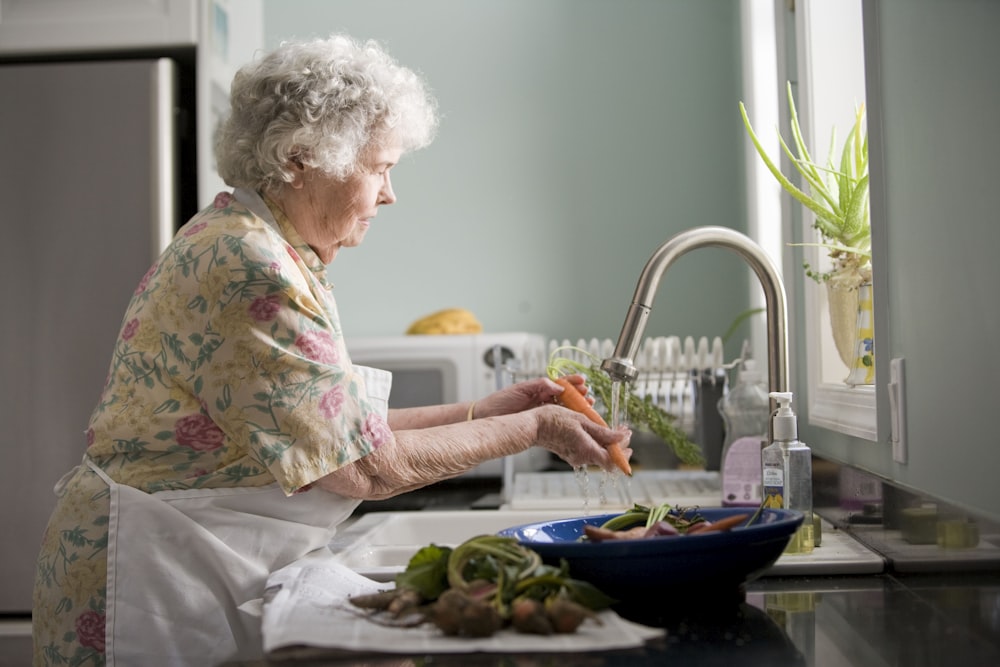目次
家事をするだけでも脳卒中発症を予防できる?
脳卒中や心筋梗塞等の動脈硬化に起因する疾病を予防するためには身体活動量を向上させることが重要となります.
理学療法士・作業療法士であれば身体活動量を向上させるための日常生活指導を行う機会も多いと思います.
でも例えば家事等の軽い身体活動でも量を増やすことが疾病の予防につながるのでしょうか?
今回は家事をするだけでも脳卒中発症を予防できる可能性を示唆する研究論文をご紹介させていただきます.

今回ご紹介する論文
JAMA Netw Open. 2022 Jun 1;5(6):e2215385. doi: 10.1001/jamanetworkopen.2022.15385.
Association of Accelerometer-Measured Sedentary Time and Physical Activity With Risk of Stroke Among US Adults
Steven P Hooker 1, Keith M Diaz 2, Steven N Blair 3 4, Natalie Colabianchi 5, Brent Hutto 6, Michelle N McDonnell 7, John E Vena 8, Virginia J Howard 9
Affiliations expand
PMID: 35657625 DOI: 10.1001/jamanetworkopen.2022.15385
今回ご紹介する論文は2022年に掲載された論文です.
研究の重要性
Importance: The amount and intensity of physical activity required to prevent stroke are yet to be fully determined because of previous reliance on self-reporting measures. Furthermore, the association between objectively measured time spent being sedentary as an independent risk factor for stroke is unknown.
脳卒中予防に必要な身体活動の量や強度は,これまで自己申告による測定に頼っていたため,まだ十分には明らかにされておりません.
さらに客観的に測定された座位時間が,脳卒中の独立した危険因子であるかどうかの関連も不明であります.
研究の目的
Objective: To investigate the associations of accelerometer-measured sedentary time and physical activity of varying intensity and duration with the risk of incident stroke.
この研究では加速度計で測定された座位時間およびさまざまな強度・時間の身体活動と脳卒中発症リスクとの関連を調査することを目的としております.
研究デザイン,設定,対象者
Design, setting, and participants: This cohort study involved participants who were enrolled in the Reasons for Geographic and Racial Differences in Stroke (REGARDS) study from February 5, 2003, to October 30, 2007. Accelerometer data were collected from 7607 Black and White adults 45 years or older in the contiguous US between May 12, 2009, and January 5, 2013. Data on other races and ethnicities were not collected for scientific and clinical reasons. By design, Black adults and residents of the southeastern US stroke belt and stroke buckle were oversampled. Data were analyzed from May 5, 2020, to November 11, 2021.
このコホート研究は,2003年2月5日から2007年10月30日までReasons for Geographic and Racial Differences in Stroke(REGARDS)研究に登録された参加者を対象としております.
2009年5月12日から2013年1月5日の間に米国本土の45歳以上の黒人と白人の成人7607例から加速度計データを収集しております.
他の人種や民族のデータは,科学的および臨床的な理由から収集されておりません.
研究デザインの性質上,黒人成人および米国南東部の脳卒中ベルトと脳卒中バックルの居住者はオーバーサンプリングとしております.
データは2020年5月5日から2021年11月11日までの間に分析されております.
曝露要因
Exposures: Sedentary time, light-intensity physical activity (LIPA), and moderate- to vigorous-intensity physical activity (MVPA) were measured using a hip-mounted accelerometer worn for 7 consecutive days and stratified by tertile for the analyses.
座位時間,軽強度の身体活動(LIPA),中程度から強度の身体活動(MVPA)を,連続7日間装着した腰部装着型加速度計を用いて測定し,三分位ごとに層別して解析に使用しております.
主要アウトカム
Main outcomes and measures: Incident stroke.
脳卒中発症の有無を主要アウトカムとしております.
研究の結果
Results: Among 7607 participants, the mean (SD) age was 63.4 (8.5) years; 4145 participants (54.5%) were female, 2407 (31.6%) were Black, and 5200 (68.4%) were White. A total of 2523 participants (33.2%) resided in the stroke belt, and 1638 (21.5%) resided in the stroke buckle. Over a mean (SD) of 7.4 (2.5) years of follow-up, 286 incident stroke cases (244 ischemic [85.3%]) occurred. The fully adjusted hazard ratios (HRs) for incident stroke in the highest tertile compared with the lowest tertile were 0.74 (95% CI, 0.53-1.04; P = .08) for LIPA and 0.57 (95% CI, 0.38-0.84; P = .004) for MVPA. Higher sedentary time was associated with a 44% greater risk of incident stroke (HR, 1.44; 95% CI, 0.99-2.07; P = .04). When comparing the highest with the lowest tertile, mean sedentary bout duration was associated with a significantly greater risk of incident stroke (HR, 1.53; 95% CI, 1.10-2.12; P = .008). After adjustment for sedentary time, the highest tertile of unbouted MVPA (shorter bouts [1-9 minutes]) was associated with a significantly lower risk of incident stroke compared with the lowest tertile (HR, 0.62; 95% CI, 0.41-0.94; P = .02); however, bouted MVPA (longer bouts [at least 10 minutes]) was not (HR, 0.78; 95% CI, 0.53-1.15; P = .17). When expressed as continuous variables, sedentary time was positively associated with incident stroke risk (HR per 1-hour/day increase in sedentary time: 1.14; 95% CI, 1.02-1.28; P = .02), and LIPA was negatively associated with incident stroke risk (HR per 1-hour/day increase in LIPA: 0.86; 95% CI, 0.77-0.97; P = .02).
7607例の平均(SD)年齢は63.4(8.5)歳,4145例(54.5%)が女性,2407例(31.6%)が黒人,5200例(68.4%)が白人でありました.
2523例(33.2%)が脳卒中ベルトに,1638人(21.5%)が脳卒中バックルに居住していることが明らかとなりました.
平均(SD)7.4(2.5)年の追跡期間中に286例の脳卒中が発生しております(244例が虚血性[85.3%]).
最高三分位と最低三分位を比較した脳卒中発症の完全調整ハザード比(HR)は,軽強度の身体活動で0.74(95% CI, 0.53-1.04; P = .08),中程度から強度の身体活動で0.57(95% CI, 0.38-0.84; P = .004)でありました.
座位時間が長いほど,脳卒中の発症リスクが44%高い結果でありました(HR、1.44;95%CI、0.99-2.07;P = 0.04).
最も高い三分位と最も低い三分位を比較すると,平均の座位時間は脳卒中の発症リスクには有意な関連を認めました(HR, 1.53; 95% CI, 1.10-2.12; P = 0.008 ).
座位時間を調整したところ,中程度から強度の身体活動の時間(時間が短い[1~9分])の最高三分位は最低三分位と比較して脳卒中の発症リスクが有意に低い結果でありました(HR、0.62;95%CI、0.41-0.94;P=0.02).
しかし時間(時間が長い[少なくとも10分])のみでみると有意な関連はありませんでした(HR、0.78;95%CI、0.53-1.15;P=0.17).
連続変数で表した場合,座位時間は脳卒中発症リスクと正の相関があり(座位時間1時間/日増加あたりのHR:1.14;95%CI、1.02-1.28;P = 0.02),軽強度の身体活動は脳卒中発症リスクと負の相関がありました(軽強度の身体活動1時間/日増加あたりのHR:0.86;95%CI、0.77-0.97;P = 0.02 ).
研究の結論
Conclusions and relevance: In this cohort study, objectively measured LIPA, MVPA, and sedentary time were significantly and independently associated with incident stroke risk. Longer sedentary bout duration was also independently associated with an increased risk of incident stroke. These findings suggest that replacing sedentary time with LIPA, or even very short bouts of MVPA, may lower stroke risk, supporting the concept of moving more and sitting less as a beneficial stroke risk reduction strategy among adults.
このコホート研究において客観的に測定された軽強度の身体活動,中程度から強度の身体活動,および座位時間は脳卒中発症リスクと有意かつ独立に関連しておりました.
また座位時間が長いことも脳卒中発症リスクの上昇と独立に関連しておりました.
これらの知見は座位時間を軽強度の身体活動,あるいは非常に短いMVPAに置き換えることで,脳卒中リスクを低下させる可能性を示唆しており,成人における脳卒中リスク低減策として,より多く動き,より少なく座るという概念を支持するものであります.
今回は家事をするだけでも脳卒中発症を予防できる可能性を示唆する研究論文をご紹介させていただきました.
この結果から考えると少しでも座位時間を短くすることが脳卒中発症には重要だということですね.
家事動作のような比較的軽強度の身体活動を増やすだけでも脳卒中発症予防につながると考えられます.
このあたりの結果をふまえて理学療法士・作業療法士も脳卒中発症予防を目的として身体活動に関する指導を行っていく必要がありますね.






